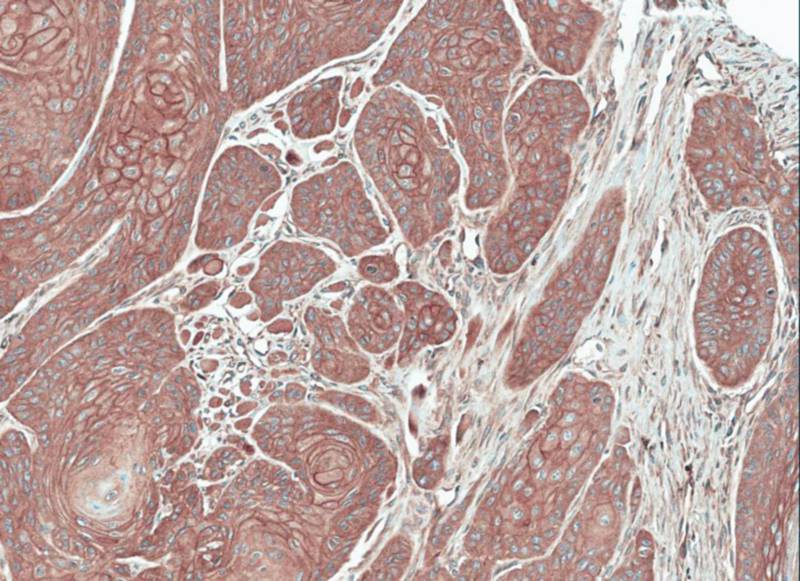Product Detail
Product NameFGFR-5 antibody
Host SpeciesRabbit
ClonalityPolyclonal
PurificationPurified by antigen-affinity chromatography.
ApplicationsWB IHC
Species ReactivityHu
Immunogen TypeRecombinant protein
Immunogen DescRecombinant protein fragment contain a sequence corresponding to a region within amino acids 150 and 486 of Human FGFRL1
Target NameFGFR-5
ConjugateUnconjugated
Accession NoSwiss-Prot:Q8N441
Gene ID:53834
Uniprot
Q8N441
Gene ID
53834;
Concentration1mg/ml
FormulationSupplied in 0.1M Tris-buffered saline with 10% Glycerol (pH7.0). 0.01% Thimerosal was added as a preservative.
StorageStore at -20˚C for long term preservation (recommended). Store at 4˚C for short term use.
Application Details
Predicted MW: 55kd
Western blotting: 1:500-1:3000
Immunohistochemistry: 1:100-1:250
Sample(30 ug whole cell lysate)
A: 293T
B: Hep G2
C: Raji
10% SDS PAGE
Primary antibody diluted at 1: 1000
Immunohistochemical analysis of paraffin-embedded Oral CA Cal27 xenograft, using FGFRL1 antibody at 1: 100 dilution.
The protein encoded by this gene is a member of the fibroblast growth factor receptor (FGFR) family, where amino acid sequence is highly conserved between members and throughout evolution. FGFR family members differ from one another in their ligand affinities and tissue distribution. A full-length representative protein would consist of an extracellular region, composed of three immunoglobulin-like domains, a single hydrophobic membrane-spanning segment and a cytoplasmic tyrosine kinase domain. The extracellular portion of the protein interacts with fibroblast growth factors, setting in motion a cascade of downstream signals, ultimately influencing mitogenesis and differentiation. A marked difference between this gene product and the other family members is its lack of a cytoplasmic tyrosine kinase domain. The result is a transmembrane receptor that could interact with other family members and potentially inhibit signaling. Multiple alternatively spliced transcript variants encoding the same isoform have been found for this gene. [provided by RefSeq]
If you have published an article using product 22119, please notify us so that we can cite your literature.




 Yes
Yes



